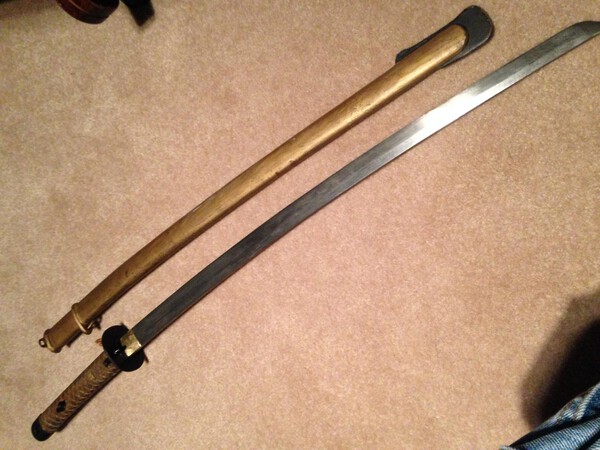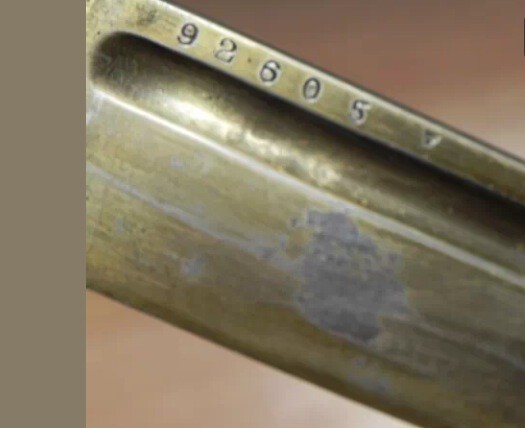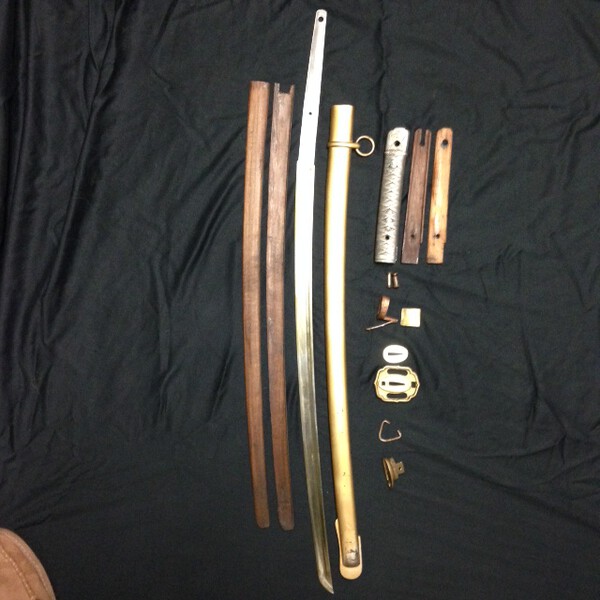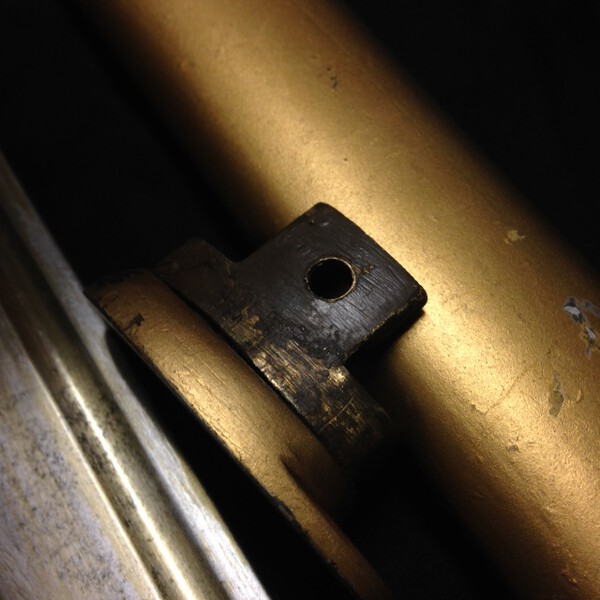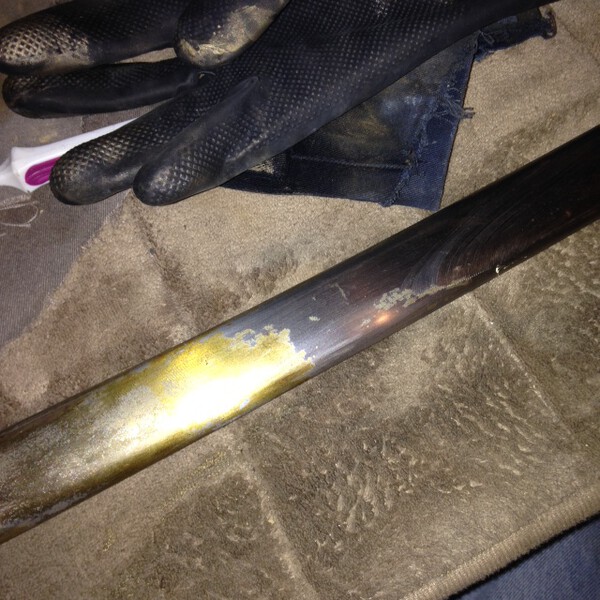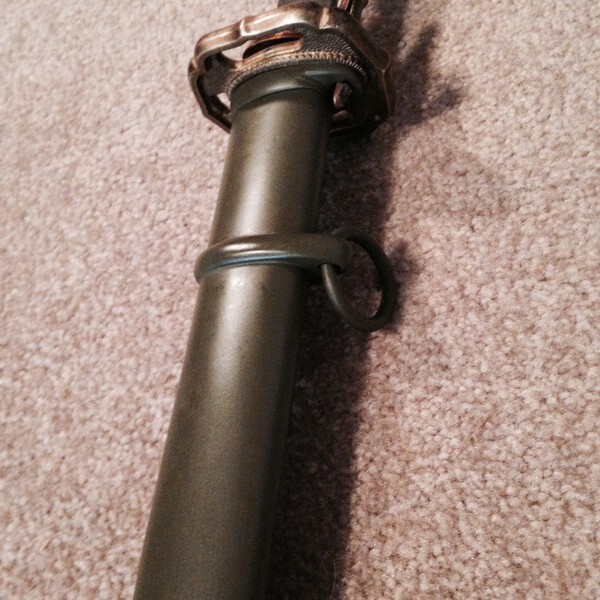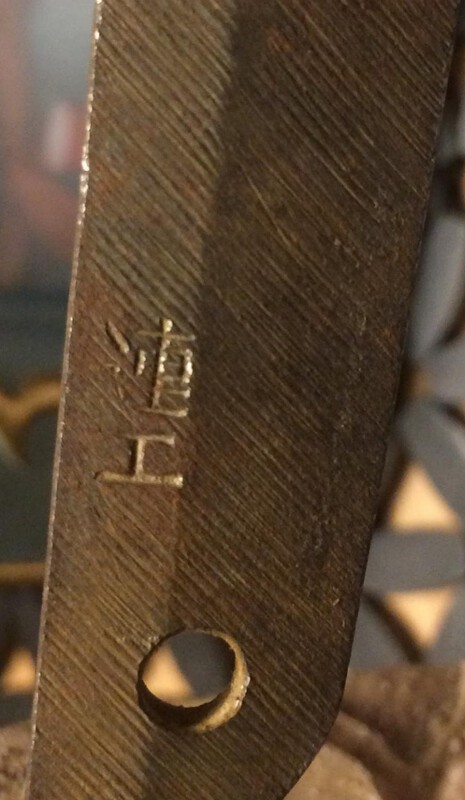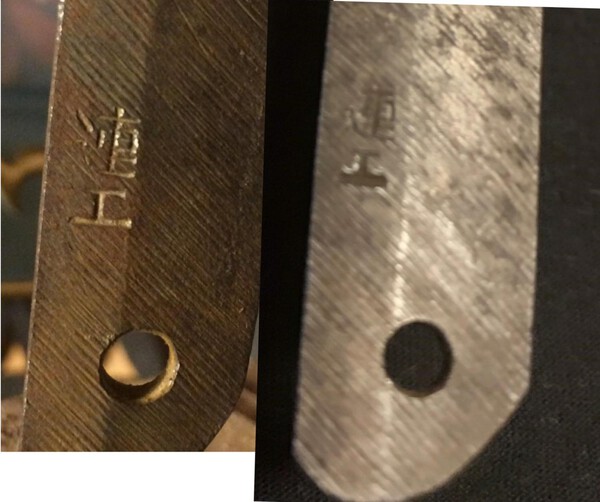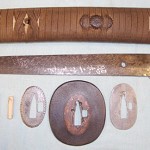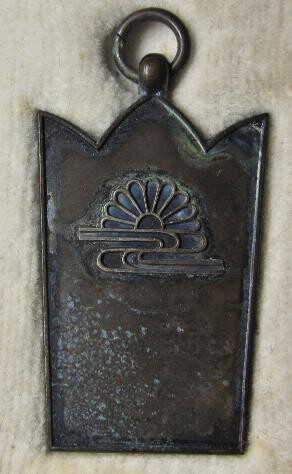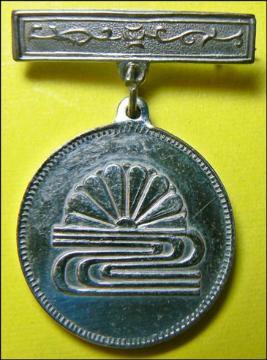-
Posts
13,744 -
Joined
-
Last visited
-
Days Won
168
Content Type
Profiles
Forums
Events
Store
Downloads
Gallery
Everything posted by Bruce Pennington
-

Sometimes Terrible Things Happen
Bruce Pennington replied to Erwin's topic in Military Swords of Japan
Nice job on that one Steve! Gorgeous! I didn't know G.I.s were doing that, but comparing the two, I still feel mine was a plasticized paint, very thin and not aged like yours. -

Sometimes Terrible Things Happen
Bruce Pennington replied to Erwin's topic in Military Swords of Japan
Wow, what a transformation! Beautiful! (Do I already have the date and serial number on that one?) -

Sometimes Terrible Things Happen
Bruce Pennington replied to Erwin's topic in Military Swords of Japan
Agree. Interesting topic though. -

Sometimes Terrible Things Happen
Bruce Pennington replied to Erwin's topic in Military Swords of Japan
I enjoyed the work, but it WAS work! I used acetone just in case the original paint was still under there, but it wasn't. My late war 95 also had a horrific re-paint. When that was removed, the original paint was still there thankfully! -

Sometimes Terrible Things Happen
Bruce Pennington replied to Erwin's topic in Military Swords of Japan
Erwin, My sentiments exactly! I have a Type 95 NCO gunto that was totally stripped and painted gold. Even the blade was painted with a transluscent gold! In researching it, back then, people came up with some interesting insights, like - right after the war, many still hated the Japanese and anything representing Japanese, so guys would use war swords as weed-wackers and wood chippers intentionally out of disrepect. Another guy grew up in England to a theater family. He said, as a kid, he saw "piles" of swords backstage, most painted gold (when you're doin The King and I, the king certainly wasn't going to have a G.I. green sword! so they painted them gold). I stripped mine and repainted. -

Kyu-Gunto Opinion And Translation Request
Bruce Pennington replied to zook's topic in Military Swords of Japan
It’s not being sold by Showa22, by chance? -

Attention Mantetsu Owners: A Survey
Bruce Pennington replied to Bruce Pennington's topic in Military Swords of Japan
Found another '44 with Ren and "I" stamp. Don't have the serial number on it, but have messaged the owner. Hopefully he's still active! Like Neil's, it's in Rinji, Type 3, mounts. -
Anybody seen anything like this before?!?! It's posted on this website, https://www.warstuff.com/RARE-WW2-1945-Japanese-Marine-Landing-Forces-Off-i1555977.htm but here's the pics:
-

Mismatched Officer's Gunto And Saya Or...?
Bruce Pennington replied to kotkinjs1's topic in Military Swords of Japan
About 3 different areas of hobby/enthusiasm involved in your question! Some folks love the craft of restoring a blade to as close to original condition as possible, with fittings. Some of us believe that every war sword deserves respect and is worth collecting/preserving. Some are in it for the buy/sell challenge, or just the chance to earn more "fun money". But many of us just collect, and each of us collect different things for different reasons. -
Well, Tom’s looks very similar to the last one on the bottom right. Not the same, but similarities.
-

Mantetsu Mei Question
Bruce Pennington replied to Bruce Pennington's topic in Translation Assistance
Neil, The true answer is "Who knows@!#!?" But, personally, I'm going with - it's a "tip-o'the-hat" to the SMR factory. By removing the circular "M"around the rail, it could indicate this was NOT made at Mantetsu, but made in the Mantetsu-way. But a sample of 1 is obviously way too little to go on (though, it does add to the Nan/Ren evidence). Thanks for the post! -
-

Mismatched Officer's Gunto And Saya Or...?
Bruce Pennington replied to kotkinjs1's topic in Military Swords of Japan
Blade looks nice, but the rest seems to be Franken-gunto. That kabutogane is really icky, like a bad reproduction. -
-

Type 32 Ko With Ishimeji Finish
Bruce Pennington replied to Mister Gunto's topic in Military Swords of Japan
I have never seen this before! Beautiful Ko, by the way! -
And I have seen both old fullered blades and blades made during the war with them. I'd say they're aren't "common", but you see them here and there. I have one that is chromed and light-weight, so probably made as a dress sword, factory made.
-
This one seems legit. Stamps are right. Tsuka is just painted brown, and I’ve seen this before on real 95s. Serial number is quite early, so a real find if it checks out. All the pics are lousy, so that can hide othe telltale signs. I’d ask the seller for a clear pic of the blade tip, scabbard tip and serial number with inspector stamp.
-
Neil, the govt should give you a grant to establish a museum with your collection! You have things that put Dawson’s work to shame!
-

Mantetsu Mei Question
Bruce Pennington replied to Bruce Pennington's topic in Translation Assistance
Thanks Steve! That would open the possibility of Ohmura's theory being true. Since my last posting, I've reviewed my data to date, and have 3 '43s with Koa Isshin and 2 '44s with Koa Isshin. It would beg the question of "why would SMR Mantetsu be making blades with 2 different mei?" Of could Ohmura be right and the Koa's were from Mantetsu and the non-koa with Nan/Ren are from Nanman? -

Attention Mantetsu Owners: A Survey
Bruce Pennington replied to Bruce Pennington's topic in Military Swords of Japan
Okaaaayyy. Just found a '43 Nan stamped blade with a "W" stamp and a '44 Ren stamp with a "W" stamp! With the current understanding that the unfinished blades sent to Tokyo Arsenal recieved the W stamp, that throws out the idea that the Ren stamp came from the Nanman Arsenal. Of the two theories, the W theory at least has single piece of evidence pointing to it, sooooo ... back to square 1 on the Nan and Ren stamps. Of course other options could explain this: 1)As of '43, The SMR Mantetsu factory began useing the Nan, and '44 Ren stamps, 2) The Nanman factory was making Mantetsu blades and sent a supply of "unfinnished" blades to the Tokyo Factory, or 3) We are still way offbase about the W, Nan, and Ren stamps! To confuse the matter more, I have 4 '43s with Koa Issin and 2 '44s with Koa Isshin. So either the Rens and Nans are Nanman products and the Koa's are SMR Mantetsu, OR Mantetsu was putting both mei out simultaneously! -

Mantetsu Mei Question
Bruce Pennington replied to Bruce Pennington's topic in Translation Assistance
Okaaaayyy. Just found a '44 Mantetsu with Ren stamp AND a "W" stamp! With the current understanding that the unfinished blades sent to Tokyo Arsenal recieved the W stamp, that throws out the idea that the Ren stamp came from the Nanman Arsenal. Of the two theories, the W theory at least has single piece of evidence pointing to it, sooooo ... back to square 1 on the Nan and Ren stamps. -
Mantetsu blades made in '43 and '44 were: 満鉄鍛造之 I've been told it means Mantetsu forged this. But one site I read, with the angle that Mantetsu taught the Nanman (Mukden) factory to make blades the Mantetsu way, proposed it means more: "Forged the Mantetsu way". Ohmura had speculated that Mantetsu taught the arsenal to make blades and that the "Ren" and "Nan" stamps were from the Nanman Arsenal. If the mei could be read the alternate way, this may support the idea that blades with this mei were from the Nanman arsenal. We know that in '43, the Mantetsu factory was ordered to supply several thousand "unfinished" blades to the Tokyo arsenal, so there seems a possibility that this was done for Nanman too, but I'm looking for any possible corroberation of this. What say you?
-
Best Gifu stamp I've seen on a fake so far. That's sad to see that they are getting better. Hope you didn't pay too much (these sell as reproductions for $150 USD). We've all been there my fellow learner! I still have my bad fake I bought when I first started! If you plan to collect, start by spending some time looking over these pages: http://ohmura-study.net/900.html. It's got fabulous examples of all the types, and best of all - it's free!
-

Is This A Tradition Made Blade?
Bruce Pennington replied to Guntoguy05's topic in Military Swords of Japan
Andrei, That's definitely some precision-looking file marks! I still have much to learn about the WWII swordmaking business, and there is very little historical information to glean from. All I am aware of for machine work during the war was hydraulic hammers for pounding out the steel and rollers for one-piece blades like the Type 95s. It's certainly possible the smith who made your blade used some sort of mechanical guide for his file, but I haven't heard nor seen info on a machine that was doing it. There is a video out there of a smith filing a nakago, but I did a quick search and couldn't find it. It is my impression that these guys were just that good! I'll defer to the nihonto/gendaito collectors on the traditional or not question. There were 9 different ways blades were made, and a few of them, non-traditional, still produced nice hamon. Like John said, the lack of stamps COULD mean it was traditionally made, however, most blades made before approx 1940 weren't stamped (the law requiring stamps on non-traditionally made blades came out in '38 but it wasn't widely practiced until '40ish). So it could simply mean your blade was made before '40, but still non-traditionally made.


